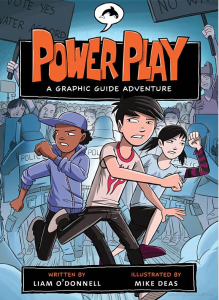Earlier this month, Linden Lab released a very early beta-version of their new sandbox game, Patterns. Clearly inspired by Mojang, Patterns takes the block-building structure Minecraft and adds two very interesting elements: triangles and physics.
I downloaded the Genesis release of Patterns and noobed it up for a while yesterday. I came away feeling that Linden Labs has a potential hit on its hands and that gaming educators around the world should be very excited about the potential this game has for learning.
Below are my first thoughts on Patterns with from an educators point of view. Check out the video at the bottom of the post, where I learn gravity beats a dirt tower every time and wheels are fun to make!
Genesis Release: Limited Tools, Unlimited Potential
I played the first release, known as the Genesis Release, which is a very early beta version of the game. Tools and worlds are limited, but already I see huge potential with what can be created. Already you can stack, rotate and modify some of the shapes. As more tools roll out, I’m excited to see where these basic building blocks will lead.
Minecraft Inspired but not a Clone
While the crew at Linden Lab openly admit to learning lessons from Mojang, Patterns is definitely not one of the countless derivative Minecraft clones. In fact, I’d say that Linden Lab are the real pioneers when it comes to sandbox games.
With Patterns, they’ve learned lessons from Second Life about creating usable GUI and a building system that doesn’t take a month to learn. I was building stuff within seconds of logging in. Unlike my time spent in Second Life where I never could get the structure building worked out before I just gave up.
LL has also learned from Mojang to release a small beta first and quickly add content/tools. I’ve enjoyed watching Minecraft evolve from basic single player version to the household name it is today. It will be interesting to see where this path leads Patterns.
Triangles & Physics FTW!
Seriously, what sets this game apart is the potential that added shapes bring and the built-in physic engine that let trees fall and bricks roll. I can see math teachers losing their minds over the geometry lessons to come.
The built in physics engine brings something that I’ve always wanted in Minecraft: gravity! Engineering and Science teachers are going to have a ball building stuff that interacts with other stuff with plausible, real laws of physics (as far as I can tell.)
Patterns in Action
Check out the game in this quick First Impressions of Patterns video I made. In it, I discover why columns made of dirt aren’t all their cracked up to be and how to make a wheel roll down stairs. Good times.
If you’re a teacher who’s interested in using games with your students, or if you’re a Minecraft fan, then you should definitely check out Patterns as soon as you can.
These are my thoughts on Patterns. I’d love to hear what other gamers and educators think of this new game. Leave a comment and let me know!
—
As a gamer-geek and elementary school teacher, I often have Tech Teaching ideas to share with fellow educators. I deliver these resources and ideas to your inbox in my e-newsletter Reading Change.
If this sounds like something you’d like to receive, then subscribe to Reading Change.
You can unsubscribe anytime and I won’t share or sell your data. Honest.
Thanks!
Liam























